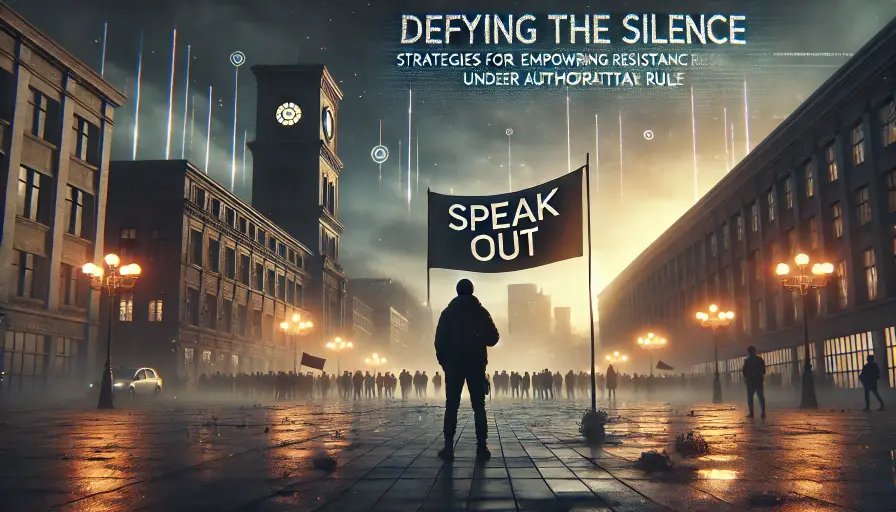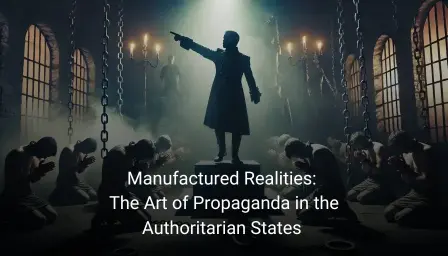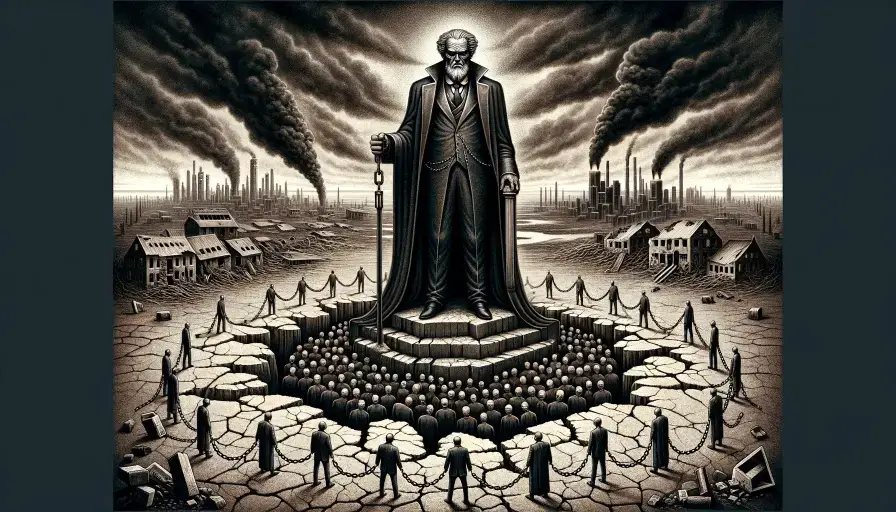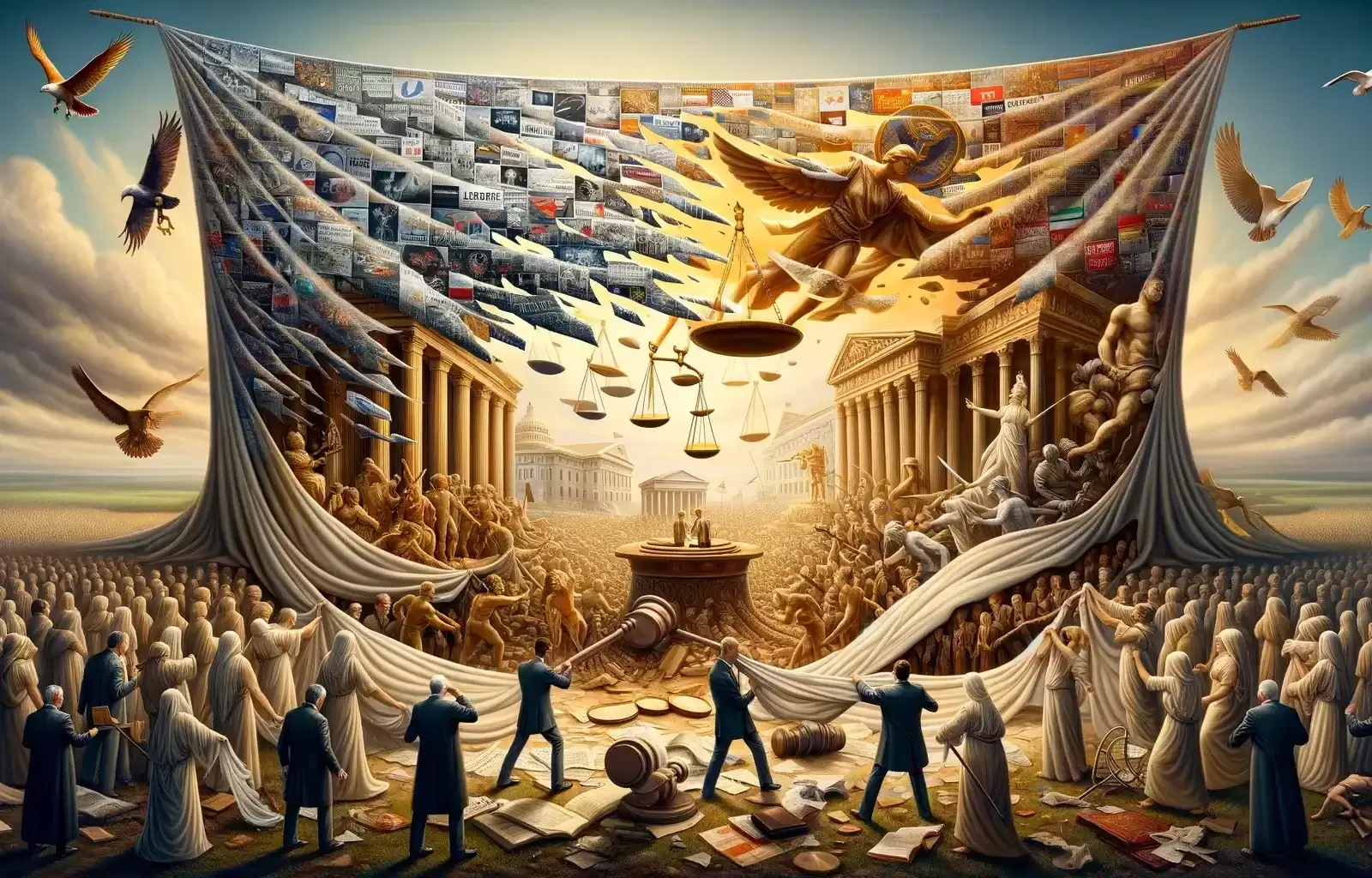The interplay between individual values and social choices lies at the heart of any functioning society. While each person holds their own set of deeply rooted beliefs, principles, and priorities, the collective well-being of a community necessitates finding common ground and making decisions that serve the greater good.
This delicate balance between respecting individual autonomy and promoting social cohesion is a complex and often contentious issue that has long been the subject of philosophical, political, and ethical debate.
Reconciling personal values with social choices speaks to the fundamental tensions between individual freedoms and collective responsibilities, personal fulfillment and civic duty, and pursuing self-interest versus the common welfare.
Social choice theory is also called public choice theory. Social choice, or collective choice, studies collective decision-making mechanisms between individuals, such as voting.
As a field, social choice combines work from political science, economics, sociology, psychology, philosophy, mathematics, and statistics to study systems where individual preferences are aggregated into social welfare functions or Individual values and social choice.
What does choice mean to individuals?
From the time we wake up to the second, we go to sleep, our lives and actions boil down to one thing: choice. Think about it: when you wake up, you choose what to wear, what to have for breakfast, whether to use public transport or private means.
A few decisions can determine your life’s direction and position. For example, a doctor can trace his career to the choice of subjects he took in high school. He would not have become a doctor if he had taken physics and math instead of biology and chemistry.
Even large organizations and countries are affected by the choices made by their leaders. Individual decision-making is influenced by many factors that can be classified into two distinct categories: external and internal stimuli.
These stimuli also help divide our choices into two broad categories: social choices and Individual choices.
Foundations of Social Choice Theory
The modern study of social choice traces its origins to French philosopher and mathematician Nicolas de Condorcet, his 1785 work on voting paradoxes, and his jury theorem.
However, arguably, the foundational formal framework for analysis was provided by 1952 Nobel Memorial Prize in Economics winner Kenneth Arrow in his 1951 doctoral dissertation and subsequent book Social Choice and Individual Values [1]. Arrow established social choice theory as an academic discipline and subfield of welfare economics distinct from traditional individual choice theory.
Some consider social choice theory a branch of public choice theory as it deals with many issues studied by economists.
However, where public choice also examines private goods mechanisms, consumer choice theory, game theory, and more, social choice focuses on collective decision-making through voting, committees, legislatures, referenda, and resource allocation rules.
INDIVIDUAL CHOICE:
An individual choice is a choice that is based on internal stimuli and without any influence from the external environment. These stimuli include emotions, feelings, opinions, and ambitions. A person decides according to what he perceives to be in his best interest or from which he will benefit most.
When a person makes an individual choice, he examines the results of his decision. Will the decision lead to economic or financial rewards, health benefits, or psychological well-being? These are some considerations of an individual decision. Sometimes, we tap into our brain’s reward pathways.
In making individual choices, we assume we only have control over our actions, not those of other individuals in the environment. Personal choice allows us to tap into our desires and, therefore, enables us to advance our agenda.
Calmness and clarity of mind are essential qualities when making these choices. One aspect of decision-making that is usually mentioned is confidence. Confidence without clarity is a disaster.
Therefore, we need clarity to make the best life decisions and individual choices. Clarity not only helps us block out external influences but also helps us carefully evaluate the consequences of the decision.
SOCIAL CHOICE:
Social choices are those choices based on external stimuli. When confronted with these decisions, we consider the consensus of social organizations, which constitutes the societal opinion.
Volunteering at a homeless shelter is one example; by devoting time to the shelter through freelance labor, one sacrifices potential financial gain in service of the welfare of others.
Government programs such as unemployment benefits, pension programs, and refugee resettlement programs are founded on social choices. These initiatives were established to assist marginalized individuals in society.
When making social choices, we acknowledge that many events in life are out of our control. This way, the state or the fortunate one in society recognizes that our position in life should be used to help those who need assistance.
Children make decisions based on internal stimuli. They want candy because it is sweet, and they want toys because they want to play with them. However, as we grow up, we learn to incorporate external stimuli into our decision-making process.
The Relationship Between Individual Values and Social Choice
Social choice theory examines how groups make decisions that reflect their members’ preferences. It’s not just about tallying votes or following the majority rule; it’s about understanding how individual values and social choice intertwine to shape collective outcomes.
This theory explores the complex dance between what people want individually and how these desires translate into societal decisions. Individual values are at the heart of social choice, whether a small community decides on a local policy or an entire nation shapes its future through elections.
Amartya Sen’s work illuminates this intricate relationship, showing that individual preferences cannot be neatly separated from social choices. His theories argue that for a society to flourish genuinely, it must consider the varied tapestry of human desires and needs within its decision-making framework.
This means recognizing that every vote cast in an election, every opinion voiced in a meeting, and every preference expressed in surveys carries the weight of personal values—values that deserve recognition in any fair and balanced approach to making social choices.
Arrow’s Impossibility Theorem: Individuals Value and Social Choices.
Arrow’s most famous contribution is Arrow’s impossibility theorem or general possibility theorem, which demonstrates difficulties in aggregating individual preferences into collective social choices. Specifically, Arrow described a set of apparently reasonable fairness conditions and found [2]:
“No method of amalgamating individual judgments can simultaneously satisfy all these conditions…This result generalizes well-known paradoxes in the literature of welfare economics.”
The critical conditions Arrow identified were:
- Unanimity – If every voter prefers one option to another, the collective preference should also rank that option higher.
- Non-dictatorship – No single voter should solely determine group preferences.
- Transitivity – Collective preferences should be transitive. If outcome A is preferred over B and B is preferred over C, then A must be preferred to C.
- Range – The method for amalgamating preferences should work for any possible individual orderings.
- Independence of Irrelevant Alternatives (IIA) – Removal of some outcomes should not affect relative preferences for what remains.
Arrow’s impossibility theorem implies difficulties in fairly aggregating preferences. For example, based on the order of evaluation, majority preferences can be intransitive or cyclical, violating Arrow’s transitivity condition.
This issue is known as Condorcet’s voting paradox, named for Marie Jean Antoine Nicolas de Caritat, Marquis of Condorcet, who described the paradox in 1785 while studying jury decisions.
Key Developments:
While Arrow’s findings reveal difficulties in social choice, subsequent research aimed to circumvent impossibility results or re-examine Arrow’s axioms. Some highlights include:
- Amartya Sen expanded the analysis of social choice mechanisms by examining subsets of Arrow’s conditions or grading condition violations rather than treating them as binary. In 1998, Sen was awarded the Nobel Memorial Prize in Economics for his work on welfare economics.
- Economist and mathematician Donald Saari used geometry and mathematics to construct a framework relating Arrow’s theorem to the structure of preferences and collective choices [3].
- Research on voting systems examines practical mechanisms for preference aggregation and ways to satisfy specific desirable criteria. Examples include rank order systems like Borda count.
- Work on measurability and interpersonal comparisons of utility by researchers like Lionel Robbins examines theoretical issues in quantifying welfare.
| Year | Contribution |
| 1785 | Condorcet explores voting paradoxes |
| 1951 | Arrow’s thesis on social choice |
| 1972 | Arrow was awarded the Nobel Prize |
| 1998 | Sen awarded the Nobel Prize |
Applications
Some areas that use or are impacted by social choice theory include:
- Voting theory and voting systems design
- Public policy evaluation
- Welfare economics and optimization
- Theories of justice and “fair” allocation
- Resource allocation mechanisms
Social choice also has implications for areas like management that aggregate individual preferences.
Main Takeaways:
1-Social choice theory studies collective decision-making mechanisms like voting that aggregate individual preferences into social welfare functions.
2-Kenneth Arrow established the modern foundations of social choice theory with his famous 1950 impossibility theorem, showing difficulties in moderately transforming individual choices into societal choices.
3-Arrow identified conditions like unanimity, non-dictatorship, and transitivity that seem reasonable but cannot all be satisfied by any preference aggregation method.
4-The Arrow impossibility theorem generalizes voting paradoxes like Condorcet’s paradox, where majority cyclic preferences violate transitivity.
5- Subsequent research aimed to circumvent limitations revealed by Arrow, like exploring relaxations of his assumptions or analyzing voting methods that satisfy crucial criteria.
6-Contributions were made by economists like Nobel winner Amartya Sen, who weakened Arrow’s axioms, and Donald Saari, who used geometry to interpret preference aggregation.
7- Social choice theory impacts areas involving the aggregation of individual judgments, such as voting systems, public policy, resource allocation, welfare economics, and more.
So, in summary, while Arrow revealed theoretical difficulties in combining preferences, work in social choice continues to understand fairness criteria better and develop practical, equitable mechanisms for collective decisions. The field has broad social and ethical implications concerning representation, expression of preferences, and social welfare.
Conclusion
Social choice theory has made significant strides in understanding the challenges of aggregating individual preferences into collective decisions. Fundamental results like Arrow’s impossibility theorem have highlighted the inherent tensions and paradoxes that can arise when satisfying basic principles of fairness and rationality.
Despite these difficulties, researchers continue to explore new approaches and methods for collective decision-making. Advances in voting theory, mechanism design, and computational social choice offer promising avenues for developing aggregation procedures that better navigate the complexities of individual values and social choice.
Ultimately, this field’s impacts span critical domains—from political institutions and economic policies to social welfare programs and ethical deliberations. As societies grapple with increasingly complex collective decisions, a deeper understanding of social choice theory will be essential for crafting decision-making frameworks that are more equitable, efficient, and aligned with the diverse preferences of the individuals they serve.
While the challenges may seem daunting, the continued progress in this interdisciplinary field offers hope that we can make strides toward more satisfactory resolutions of the aggregation problems at the heart of individual values and social choice. Ongoing research and real-world applications will be crucial for translating theoretical insights into meaningful improvements in making collective decisions with far-reaching consequences.
FAQs:
What is the concept of social choice and individual values in social science?
In social choice, often deemed a component of social science, the concept of individual values and social choice reflects aggregating individual preferences to reach a social preference or decision. The method can involve mechanisms like majority rule, and it was initially established by Kenneth Arrow, who founded the field of social choice.
Please explain the connection between the majority rule and the social choice rule.
The majority rule is critical to the social choice rule, which dictates how social decisions should be collectively determined. While majority rule is often posited as a social choice rule that favors the majority’s preference, paradoxically, it can face difficulties such as a lack of responsiveness and neutrality, mainly when there are more than two alternatives.
What was the contribution of Kenneth Arrow to the field of social choice?
Kenneth Arrow, a professor from Stanford University and Nobel laureate who received the prize in economics in 1972, is widely celebrated for his work in social choice. His book, “Individual Values and social choice,” was initially published by the University of Chicago and laid out the Axiomatic Theory of Social Choice, founded the field of social choice, and highlighted that under certain conditions, there exists no social choice rule that can transform individual rankings into a satisfying social ranking.
How does majority voting influence modern social choice?
Given its simplicity and generalization, majority voting plays a significant role in modern social choice. However, Arrow’s work suggests that majority voting may fall short when there are more than two alternatives, leading to inconsistency and cyclical preferences. Modern social choice theory is trying to mitigate this paradox of social decisions.
What is the significance of the Pareto principle in the social choice rule?
Pareto principle or efficiency is an integral part of the social choice rule. According to it, if a change can make at least one individual better off without making anyone else worse off (i.e., Pareto improvement), then the change should occur. However, Arrow’s impossibility theorem posits that even Pareto efficiency may not satisfy all conditions for a fair social decision.
How is utilitarianism linked with the field of social choice?
Utilitarianism, a political philosophy primarily associated with the idea that the best action is the one that maximizes overall “happiness,” plays a significant role in social choice. However, it may not always align with majority rule or other social choice rules, as it involves making social choices that maximize total welfare and thus may favor the many, even at the expense of the few.
Is there a notion of correctness in social preference or decision-making?
As the University of Chicago and Stanford University proposed, the “jury theorem” suggests that under certain conditions, a group of individuals (e.g., a jury) using majority rule can make a more correct decision than each juror’s. This indicates the power of collective decision-making in social preference.
References
[1] Arrow, K. J. (1963). Social choice and individual values (2nd ed.). Yale University Press.
[2] Arrow, K. J. (1950). A difficulty in the concept of social welfare. Journal of Political Economy, 58(4), 328–346.
[3] Saari, D. G. (1999). Explaining all three alternative voting outcomes. Journal of Economic Theory, 87(2), 313-355.









